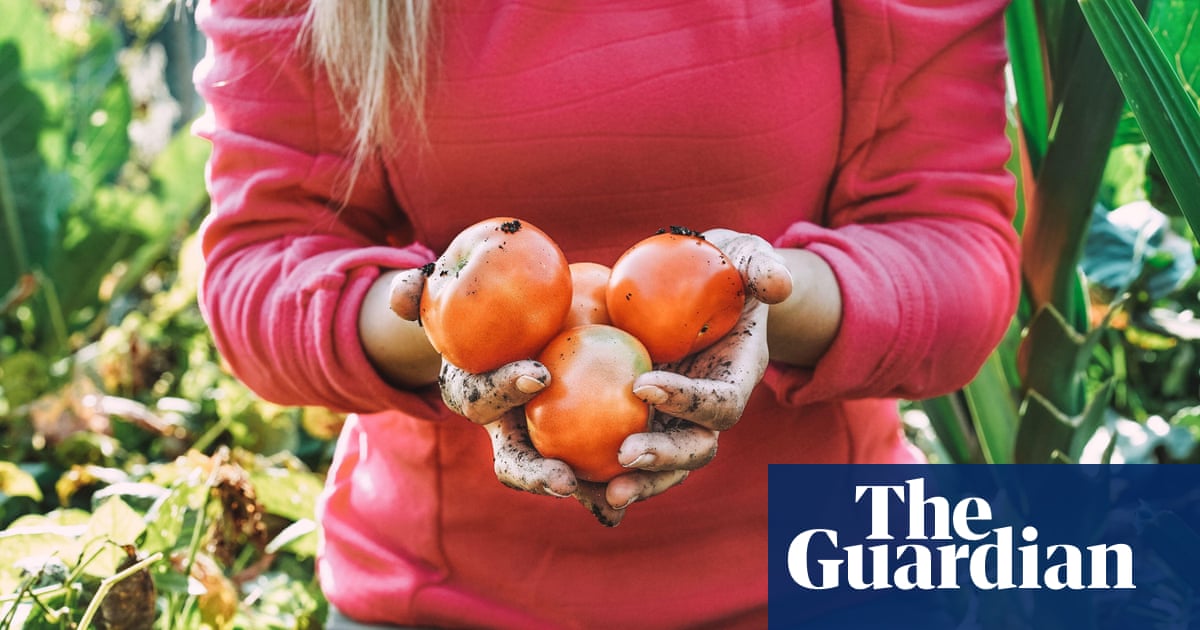My vegetable garden is a jungle. The grass is waist-high, the weeds have consumed my gardening tools and representatives from all classes of the animal kingdom – possibly also a jabberwocky – are enjoying a comfortable existence in there, eating my salad greens and each other.
Letting things go feral seemed like a good idea. I had recently learned about carbon-positive agriculture, sometimes called carbon farming, and wanted to apply those principles on a smaller suburban scale in my Blue Mountains vegetable and fruit-growing endeavours. The goal: ever more luscious tomatoes, enormous zucchini, sweet raspberries and bushels of tart, juicy apples.
Carbon-positive farming (or gardening) is a simple concept: remove carbon from the atmosphere and put it into the soil. In agriculture, it offers a potentially significant part of the solution to address the global crises of climate change, caused by too much carbon in the atmosphere, and decreasing soil fertility, caused by a loss of carbon in the soil.
Carbon makes soil work better, says Prof Budiman Minasny, a soil scientist at the University of Sydney. “The trees, the plants, the animals, the bacteria, when they die they form organic matter in the soil, and a large part of it – more than 50% of it – is carbon,” Minasny says.
That organic matter helps the soil form clumps which allow water to spread, while holding and supplying the nutrients plants need. The more carbon in the soil, the healthier it is.
The most obvious way for a back yard gardener to get more organic matter back into the soil is by composting all plant-based organic waste, including leaves. “Composting actually helps break down all the leaves and other things into a more stable form of carbon; that means that it doesn’t get released quickly,” Minasny says.
His own back yard is always full of leaves, but instead of throwing them out, he gathers them up and puts them on top of the soil.
There are techniques to composting to ensure that you don’t generate too much methane – a potent greenhouse gas – and that your organic waste breaks down nicely. That means layering your nutrient-rich kitchen waste with less rich materials such as leaves, grass clippings or even shredded newspaper or cardboard. If you don’t have room for a compost bin, digging kitchen scraps directly into the soil can work too.
In agricultural settings, one carbon-positive technique that’s gaining traction is low-till or zero-till farming. Tilling – turning over the soil – releases a lot of nutrients for crops, but it also releases a lot of soil carbon into the atmosphere. Low- or zero-tilling involves only turning over narrow channels for planting, or even just planting into holes without tilling the rest of the soil. The rest of the soil is left undisturbed.
I tried that. Somewhere in my back yard jungle are three cabbage plants I planted a few months ago. I think the weeds have roasted and eaten them for breakfast by now. Chalk that one up as a fail.
Soil scientist Prof Alex McBratney, from the University of Sydney, isn’t as enthusiastic about no-till for back yard gardens. “I guess I’m old fashioned,” he says. “I would be a tidy gardener.”
A better solution is cover crops, he says. This term describes plants that are grown specifically to prevent erosion, slow the growth of weeds, retain moisture, add nutrients, and reduce the risk of pests and diseases, which are also a key part of carbon-positive agriculture.
Traditionally, back yard gardeners grow their fruit and vegetables in spring and summer, then harvest and leave the soil largely fallow through autumn and winter. But if all a gardener does is plant the crop and harvest it while doing nothing else to improve the soil, then overall they will probably be depleting the quantity and quality of soil carbon over time, losing it both in terms of harvested produce but also the carbon lost to air and erosion.
Cover crops put nutrients – particularly carbon and nitrogen – back into the soil during that fallow period, can help control pests and disease and help crowd out weeds. McBratney suggests planting a mix of cereals (for example, winter wheat or buckwheat) and legumes such as peas and beans, with a few brassicas – cabbage, cauliflower or broccoli, for example – which are good for controlling fungal diseases.
“You’re just growing them to grow biomass above ground and to grow nitrogen and biomass below ground,” McBratney says. The legumes don’t need to be staked up; they can lie on the ground, then dug into the soil in spring.
A more controversial technique in carbon farming is adding carbon as biochar; a form of charcoal made by burning organic material in low-oxygen conditions. It undoubtedly adds carbon, but whether it achieves an overall reduction in atmospheric carbon is up for debate. McBratney says if you have woody material that can’t be composted, and you can burn it in a covered pit to make biochar, “it may have certain advantages for nutrient-holding and microbial populations”. Biochar can also be bought from plant shops and online.
But a simpler technique, at least for sandy or light soils, is to add some clay by mixing it with water and watering it into the soil. “The more clay you have, the more likely you are to retain or grow carbon,” he says.
After a brutal, sweaty weekend, the waist-high grass has been yanked out – with as little disturbance to the surrounding soil as possible – and laid to rest on the soil surface to hopefully return some of that grassy carbon back to the soil as it decomposes and reduce moisture loss. The population of worms has been boosted by mass relocation from my compost bin and the newly bare patches of soil have been clothed in grass clippings and cardboard. Now I’m just waiting for the sun and rain to do their work.











